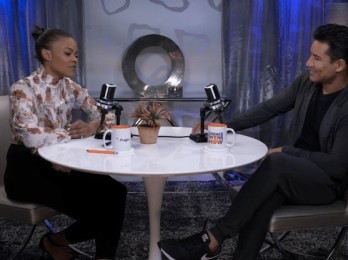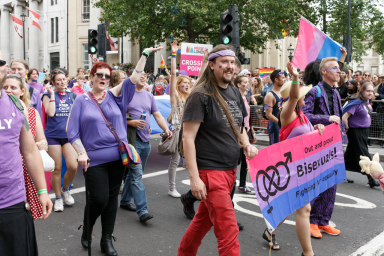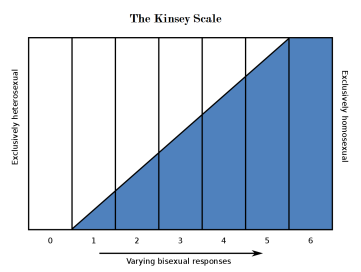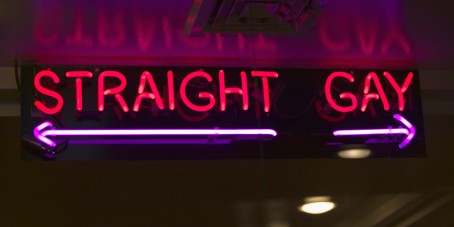Bisexual Men. Is that really a thing?
Written by: J. Stokes – September 12, 2019

During the AVIOT podcast’s 49th episode “Rules Don’t Apply,” co-hosts J. Stokes and Jay Random spoke about the backlash aimed at entertainment host Mario Lopez for comments he made as a guest on The Candace Owens Show in June of this year. His comments were about parents raising their kids to be transgender. When speaking to the show’s host, Lopez asserted:
“If you’re three years old and you’re saying you’re feeling a certain way or you think you’re a boy or a girl, whatever the case may be, I just think it’s dangerous as a parent to make that determination then.”

Members of the LBGTQIA+ community and their supporters later criticized Lopez for these remarks, which ultimately resulted in an apology on his behalf. AVIOT’s co-hosts found the backlash disturbing, emphasizing that parents should wait until a child is older before considering a sex change. Random went on to later criticize US society and the notion that everyone should be free to express themselves. He explained that freedom of expression at any age regarding sexuality can lead to confusion. Random then added:
“And that’s how you got all these quote on quote ‘bi’ people running around here. They’re bi. They don’t know what the hell they are, so they label it as bi. No, no, no. You cannot be bi. I’m sorry. You cannot be a guy liking men and women. It’s either or.”
Listen below to “Rules Don’t Apply” at time 22:56 to hear Random’s take on freedom of expression and bisexuality in more detail:
Really a Question
Random’s sentiment toward bisexuality, specifically bisexual men, is not uncommon. Rullo, Strassberg, and Miner (2015) stated that bisexuality is perhaps “the most controversial and least understood of sexual orientations” (p. 1449). It has been argued that most bisexual men are truly gay and insist on fooling themselves and/or society to believe otherwise. Many have also trivialized this sexual orientation as an illegitimate and transitional “phase” (Baldwin et al., 2016). In contrast to men, women are given more leeway with sexual expression, thus allowing this demographic to experience sexual fluidity or changes in attractions and sexual orientation identity. Therefore, women who practice bisexual behaviors are not quite as stigmatized as men.

According to Baldwin et al. (2016), bisexual individuals commonly report facing stigma, discrimination, and prejudice from both heterosexual and gay/lesbian individuals regarding their sexual identity. However, McCormack, Anderson, and Adams (2014) claimed “male bisexuals face more discrimination than female bisexuals” (p. 1208). Much of the ostracism faced by bisexual men is rooted in the belief that these men were responsible for the spread of HIV to heterosexuals during the beginning stages of the AIDS epidemic. More specifically, married bisexual men were thought to have had sex with HIV-positive gay men and transferred the disease to their wives. Adding to this, mass media has sensationalized “the Down Low,” which refers to bisexual — Black — men who publicly claim heterosexuality while sleeping with men in secrecy (Baldwin et al., 2016).
Really a Concern
In response to Random’s comments about bisexuality, Stokes further explained the difficulty in believing men who claim this sexual orientation using anecdotal evidence. Specifically, he referred to experiences interacting with bisexual men who are mostly intimate with male partners. Random also added information he was given by a female friend, who stated that some men will not use protection when having sex with male partners because doing so makes them feel gay.
It is important to note that bisexuality has several different manifestations. This could be why many are confused by men who identify as such. Rullo et al. (2015) purported that while there is no consensus about how any sexual orientation is defined, sexual arousal/interest research has operationally defined bisexuality in at least three different ways.

First, is The Kinsey Scale. This scale was developed using thousands of interviews asking people about their sexual histories. From these interviews, it was discovered that sexual behavior, feelings, and thoughts towards the opposite or same sex were not always consistent over time. This led to the development of a seven-point scale, ranging from zero (exclusively heterosexual) to six (exclusively homosexual) with an additional category of “X” (no socio-sexual contacts or reactions). The Kinsey Scale has defined bisexuality as having an average score of 2–4. Despite this interpretation, however, some have criticized The Kinsey Scale, stating that it does not truly encompass the complexity of the bisexual experience.
A second definition for bisexuality has been that it is simply one’s self-identification. While this explanation seems fair, it may also produce different classifications since individuals identifying “as bisexual may do so for reasons other than the targets of their sexual interest” (Rullo et al., 2015, p. 1450). Lastly, bisexuality has been defined as a combination of self-identifying as bisexual in addition to having had multiple romantic and sexual partners of each sex. Unfortunately, this operationalization is also problematic since many who identify as bisexual have not been in romantic relationships with each sex.
Really a Process

Ultimately, bisexual individuals make up a unique group that is not fully understood by those outside of the LBGTQIA+ community. One could furthermore argue that even amongst the bisexual and gay community there is no consensus as to what constitutes bisexuality. Therefore, the confusion shared by AVIOT’s co-hosts is understandable. Sexuality is complex and constantly debated by those who partake in sexual arousal/interest research. However, instead of discriminating against bisexual individuals, specifically men, more conversations should be had about this sexual orientation and those who fall within its loosely defined parameters. Coming to an understanding about how different individuals view sexual orientation is important, especially since interpretations vary.
**Let us know what you think about our take on the AVIOT podcast and its co-hosts’ thoughts about bisexuality by leaving a comment down below!**
References
Baldwin, A., Dodge, B., Schick, V., Hubach, R. D., Bowling, J., Malebranche, D., … & Fortenberry, J. D. (2015). Sexual self-identification among behaviorally bisexual men in the midwestern united states. Archives of Sexual Behavior, 44(7).
Dodge, B., Herbenick, D., Friedman, M. R., Schick, V., Fu, T. C. J., Bostwick, W., … & Sandfort, T. G. (2016). Attitudes toward bisexual men and women among a nationally representative probability sample of adults in the United States. PLoS One, 11(10), e0164430.
McCormack, M., Anderson, E., & Adams, A. (2014). Cohort effect on the coming out experiences of bisexual men. Sociology, 48(6), 1207–1223.
Rullo, J. E., Strassberg, D. S., & Miner, M. H. (2015). Gender-specificity in sexual interest in bisexual men and women. Archives of sexual behavior, 44(5), 1449–1457.

Great article, further research is certainly needed with regards to bisexuality and choice of life partner with an analysis of the factors that came to this choice would be an interesting read.
LikeLiked by 1 person
Hello Stephane!
Thank you for reading this! We appreciate the comment and will take your suggestion into consideration. If you ever get the chance to, please share the following link for this article:
View at Medium.com
We post some of the same articles on our Tit 4 Tat weblog that J. Stokes (me) writes for medium.com (which is a paid subscription service) to give our followers/supporters/onlookers a chance to read. We strive to educate the public, specifically looking to help people become more media literate. I currently write for medium.com to give K3mistry Productions, whom Tit 4 Tat is the official blog of, more exposure and revenue.
Once again, thank you for your input! We greatly appreciate you!
J. Stokes
LikeLike